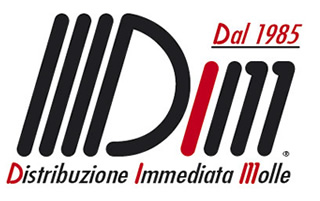ANSWERS TO THE MOST FREQUENTLY ASKED QUESTIONS
-
What maximum and minimum temperatures are your springs resistant to?
It is difficult to set down minimum and maximum temperatures for the materials used in the springs.
And the resistance values can vary greatly from one spring to another.
However, there is a temperature, or a narrow range of temperatures, above or below which the properties rapidly deteriorate; in this case the spring in question is not able to satisfy the normal requirements.
Nevertheless, you need to remember that the modulus of elasticity varies as the temperature varies.
Therefore, the springs’ resistance depends on the material that they are made of, that is:
Stainless Steel according to UNI EN 10270.3-SN
From -200°C to +200° C
High Carbon Steel according to UNI EN 10270.1-SH
From -50°C to +100°C
-
What material do I need to use for high temperatures?
For operating at high temperatures, you need to use special materials such as Cr-Si alloy steels for up to around 250°C, or special alloys like Inconel for temperatures of above 500°C.
These materials are not used for the construction of the springs in the D.I.M. catalogue.
-
How many cycles can one of your springs bear?
The springs in the D.I.M. catalogue are calculated for static loads in the indicated conditions of strain.
For dynamic loads, a spring’s fatigue strength depends on many factors, such as temperature, surroundings (corrosive/ non-corrosive), the extent of the stress, etc.
The most common method to theoretically calculate the fatigue strength of a spring is by constructing a Goodman diagram.
-
What tolerance levels do your springs have?
D.I.M springs manufacturing tolerance levels are in line with the following standards (GRADO 2).
-
How is the extension of the extension spring calculated?
In order to calculate the maximum extension of an extension spring, you need to calculate the stress on the spring body and on the eyelets.
The maximum permissible extension is the length when the stress exceeds the yield point of the material used to manufacture the item.
-
Are the springs sold in prepackaged bags?
There is no limit to the amounts of springs we sell. Therefore, you can even just buy one of each type of spring with the only obligation that you must reach a minimum invoice of € 50,00 + VAT for each order.
-
Do you have springs in stock that are not in the catalogue?
D.I.M. exclusively sells the articles shown in the catalogue in the sizes shown.
-
What do I have to do to order springs that are not in the catalogue?
If you have a detailed technical draw you can go directly to Mollificio Lombardo spa in Carvico, a spring producer certified ISO9002 , whose name is present in our Home Page.
-
Can I have an assorted box containing all the springs that I need?
The assorted boxes are prepackaged and contain assorted springs from our standard range. Therefore, it is not a specific package based on the customer’s requests.
-
Do I have to come to collect the order or can I ask for the springs to be delivered?
D.I.M. ships carriage forward throughout Italy using the carrier requested by the customer or using our usual carrier with the expenses added to the invoice.
-
Can private individuals purchase from you?
We do not sell to private if you do not release the invoice for a minimum of € 100,000 + VAT with cash on delivery.
-
Where is Via Sant’Uguzzone in Milan?
Our offices are inside Via Sant’Uguzzone 5 in Milan at the end of V.le Monza in the direction of Sesto San Giovanni.
In order to collect goods, we suggest that you enter through the courtyard in Via Soffredini (on the corner with Sant’Uguzzone).
-
How can I get to your offices?
You can get here on the MM1 red line of the underground, getting off at the Villa San Giovanni stop and continuing on foot for around 200 m in the direction of Sesto San Giovanni
-
What are your opening and closing times?
Our opening times are the following:
From Monday to Friday from 8.30 am to 12.30 pm and from 1.30 pm to 5.30 pm.
